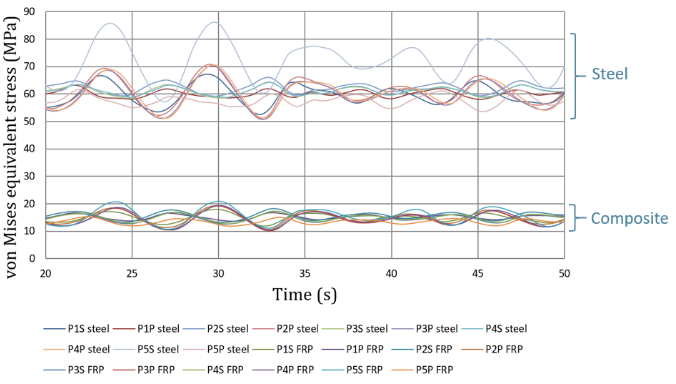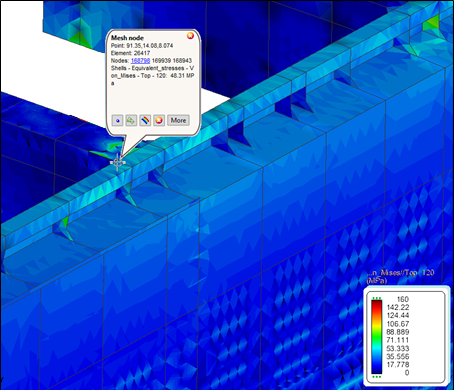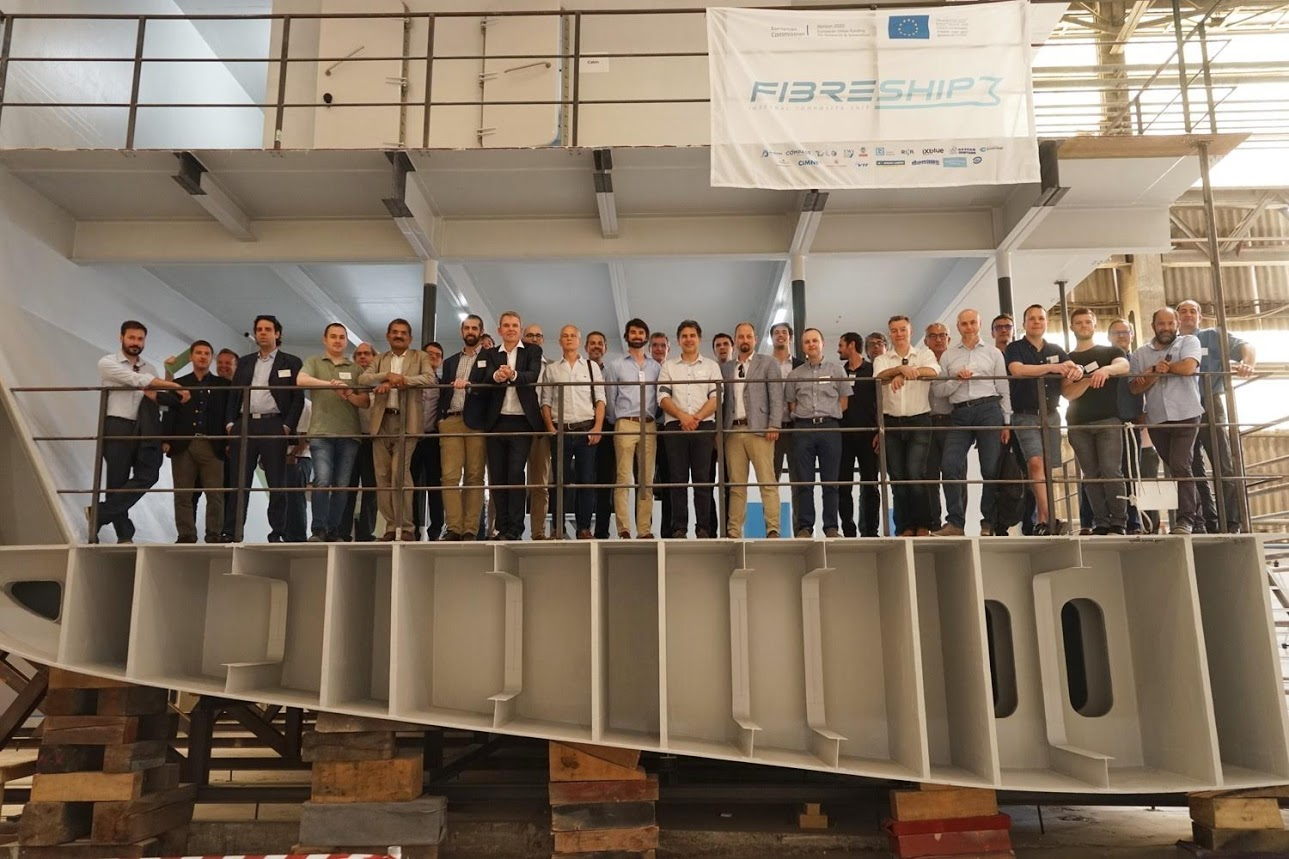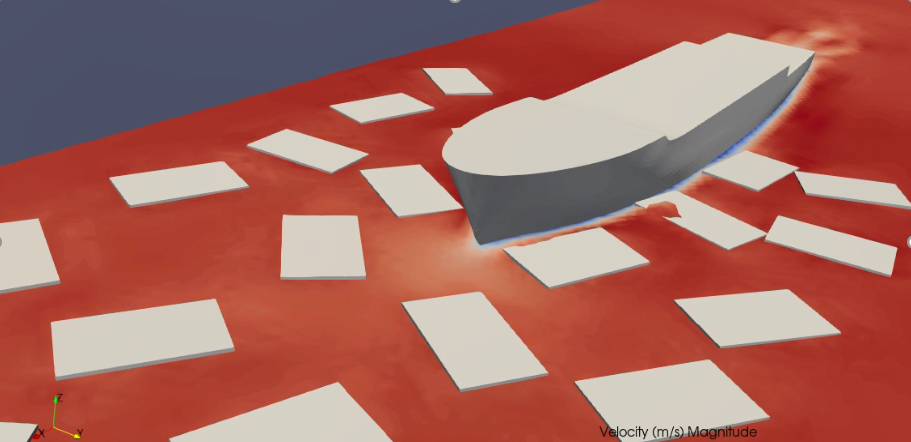Research
- Development of technology for the massive application of composite materials in large marine structures.
- The objective of this line is the development of computational tools to enable the design and assessment of large FRP marine structures.
- References
- R. Pacheco, D. Di Capua, J. García-Espinosa, O. Casals and T. Hakkarainen. Thermo-mechanical analysis of laminated composites shells exposed to fire. Summited to Composite Structures.
- B. Serván Camas, D. Di Capua, J. García Espinosa. Fully 3D ship hydroelasticity: monolithic versus partitioned strategies for tight coupling. Submitted to Ocean Engineering.



- Hydrodynamic analysis of vessels.
- The current objective of this line is the development and application of advanced computational tools for the analysis and optimization of ship hulls.
- References
- J. Colom Cobb, J. García-Espinosa, B. Servan Camas, P. Nadukandi. A Second Order Semi-Lagrangian Particle Finite Element Method for Fluid Flows. Computational Particle Mechanics (2019).
- J. García-Espinosa, B. Servan Camas. A non-linear finite element method on unstructured meshes for added resistance in waves. Ships and offshore structures (2018). 14:2, 153-164.

- Ship structures / fluid-structure interaction
- The current objective of this line is the development and application of advanced computational tools for the direct analysis of ship structures (including structural health monitoring solutions).
- References
- 1. B. Serván Camas, D. Di Capua, J. García Espinosa. Fully 3D ship hydroelasticity: monolithic versus partitioned strategies for tight coupling. Submitted to Ocean Engineering.

- Development, validation and demonstration of a semi-lagrangian algorithm to analyze the navigation in ice of ships.
- The objective of this line is the development of a semi-lagrangian computational analysis tool for the navigation in ice of ship.


